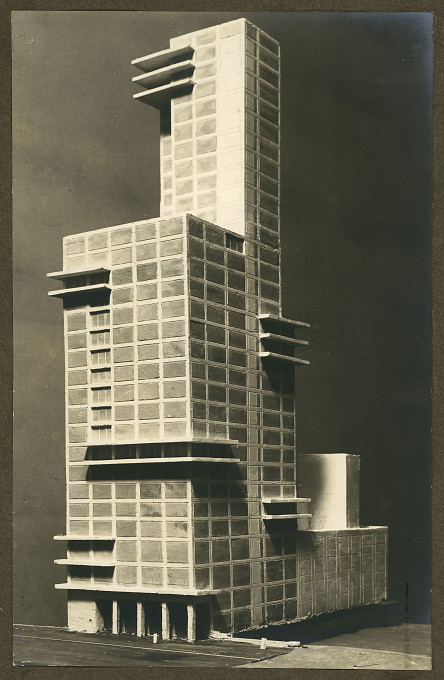
Walter Gropius und Adolf Meyer (design), Contribution to the Competition for the Chicago Tribune Office Building, 1922 Bauhaus-Archiv Berlin
From the very start, the teaching of architecture was regarded as the highest educational goal in the idea and programme for the Bauhaus. However, a separate architecture department was only established in 1927 under its second Director, Hannes Meyer. Until then, Gropius had mainly allowed his students to work on commissions in his own office. His aim was to have all of the teaching areas collaborating in the ‘building of the future’. By contrast, Meyer regarded previous Bauhaus work as a purely formal development whose products had been designed for bourgeois circles. He wanted to design things for broad sections of the population. The basis for the architectural training that was provided thus consisted of identifying users’ needs; artistic concerns were made subordinate to this. Finally, under the third Director, Mies van der Rohe, architecture became the predominant teaching area. Under the influence of Mies’s own work, aesthetic issues moved strongly to the fore. Ludwig Hilberseimer balanced this with exercises aimed at practical aspects. The three Directors of the Bauhaus – all of whom were major architects – thus each put their own personal stamp on the college’s teaching work. Consequently, there was never a standard ‘Bauhaus architecture’.